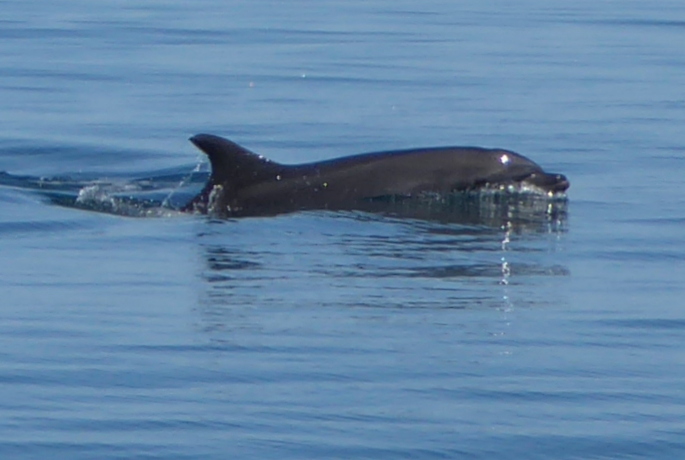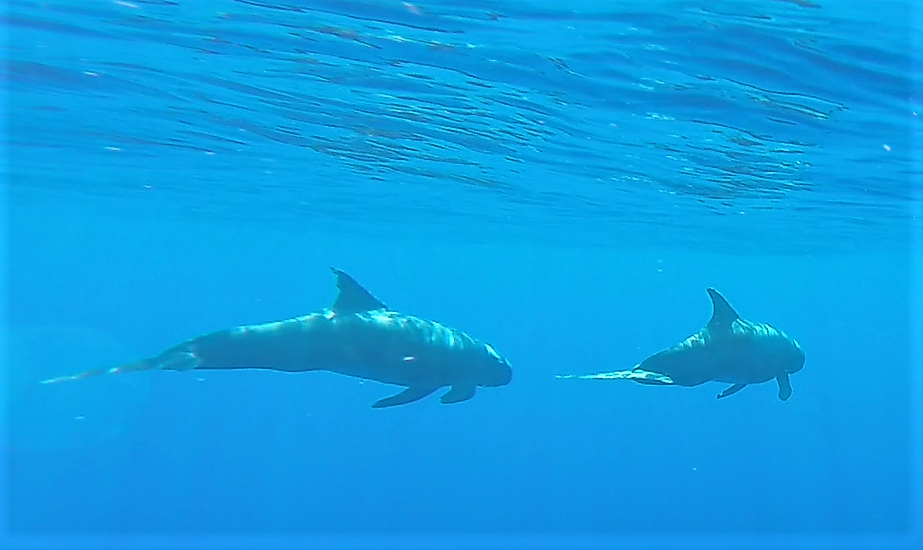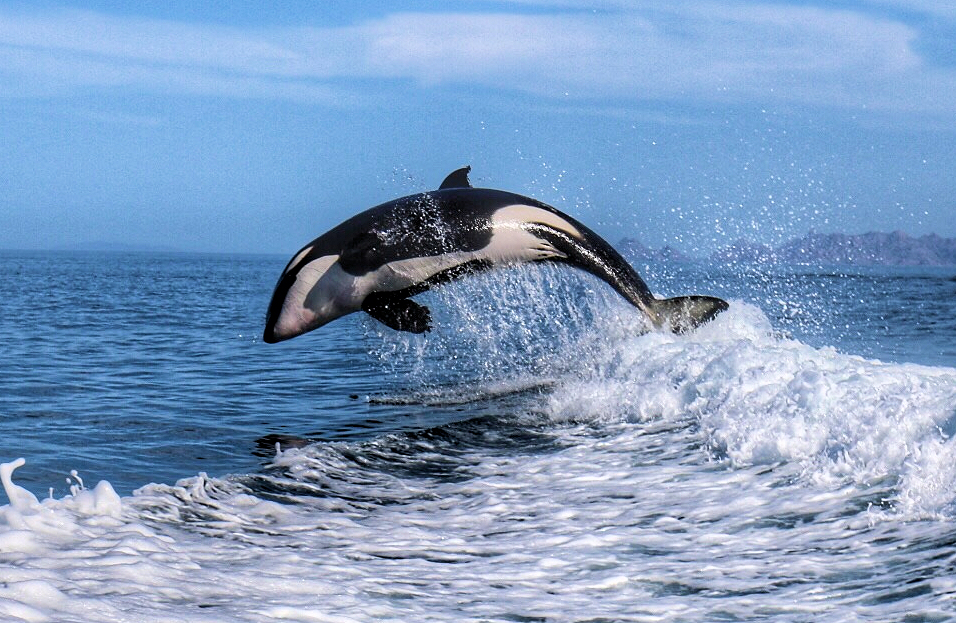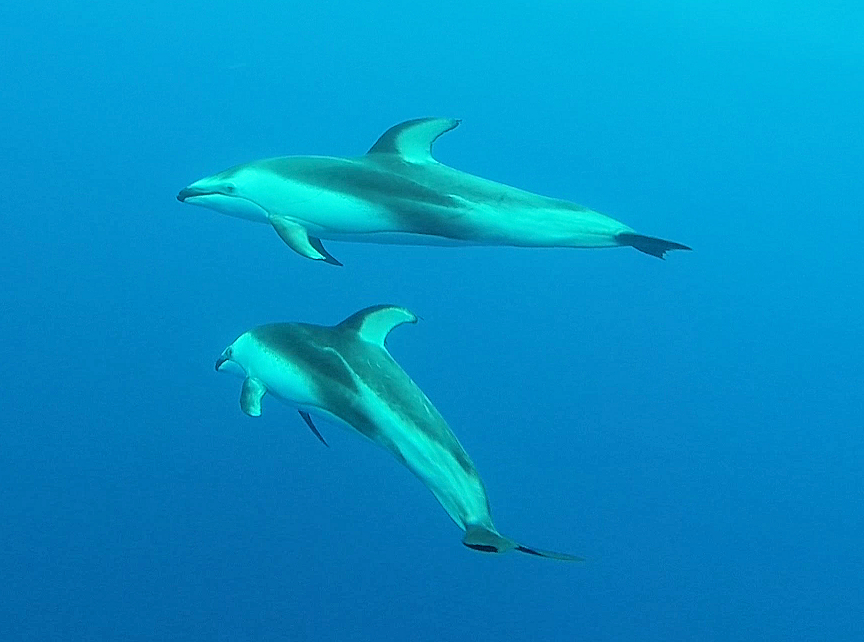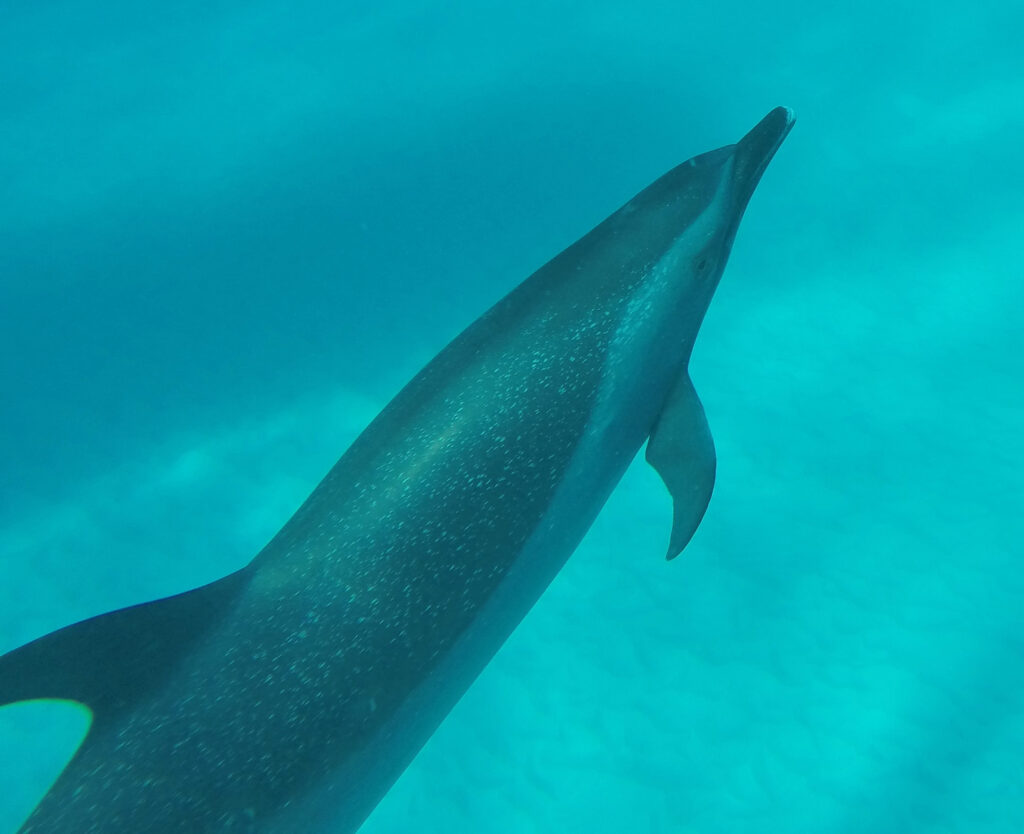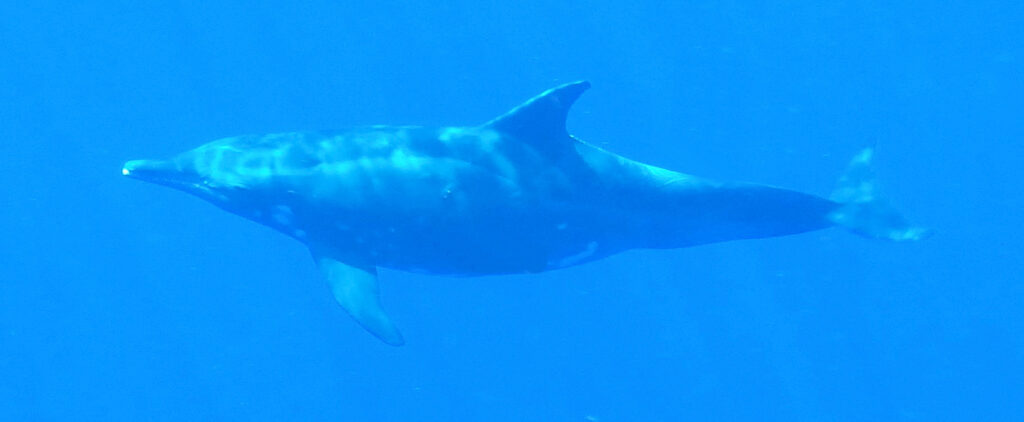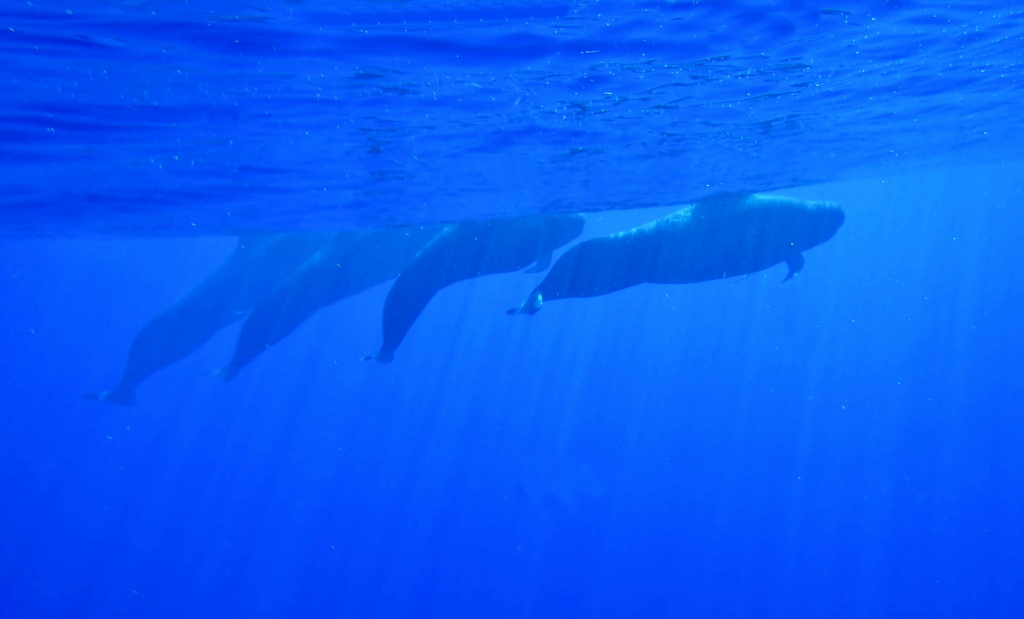Delphinidae Family of Dolphins
Phylogeny: Oceanic Dolphins are members of the largest family of Cetaceans, the Delphinidae Family, which also includes toothed whales and not all live in the ocean as some live in lakes or rivers. They belong to the Phylum Chordata, and the Class Mammalia and the Order Artiodactyla, which is the same order as hoofed ungulates, from which they evolved. They are in the Infraorder Cetacea which are the baleen and toothed whales.
Distribution: Ocean Dolphins are marine mammals that are found globally in all polar, temperate and tropical seas. They are thirty-eight members in the Delphinidae Family of which sixteen are found along the west coast of Mexico. They can be found in shallow water and to depths up to 4,725 m (15,500 feet).
Morphology: All ocean Dolphins have a single blowhole on top of their head, just to the left of center. Dolphins differ from porpoises by having pronounced beaks and more conical, sharper teeth with a cutting edge. They all have conical teeth, a dorsal fin located in the center of their back, and a notch in the center of the trailing edge of their fluke (tail).Ocean Dolphins vary greatly in size (from 1.7 m to 9.0 m in length), coloration, body shape, beak length and width and social habits.
Ecosystem Roles: All Ocean Dolphins are predators that feed on free swimming fish, squid, and other marine mammals. Some also eat benthic prey such as algae, octopus, shrimp, tunicates, and worms. In turn Ocean Dolphins are preyed upon by to sharks and other Ocean Dolphins such as Killer Whales and False Killer Whales.
